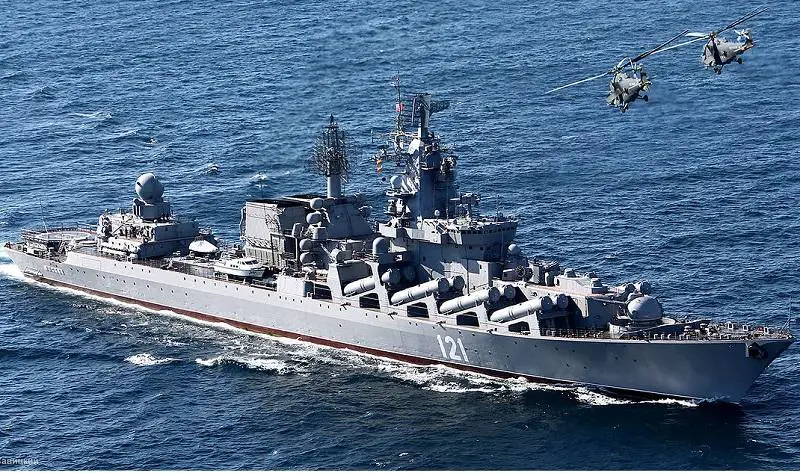Russia said the crew of its guided-missile cruiser Moskva was evacuated on Thursday after an explosion of ammunition aboard that Ukraine said was caused by a Neptune anti-ship missile strike. The Moskva, Russia’s Black Sea fleet flagship, is still believed to be afloat and it is heading to Sevastopol. Russia’s defense ministry said the fire on the Soviet-era missile cruiser had been contained but left the ship badly damaged. It did not acknowledge the ship, which had more than 500 sailors aboard, had been attacked. The Moskva’s loss or disabling would be a fresh hit to Russia’s stuttering campaign on the 50th day of the war as it readies for a new assault in the eastern Donbas region that is likely to define the conflict’s outcome.
Moskva (Moskow), formerly Slava (Glory), was a guided-missile cruiser of the Russian Navy. She was the lead ship of the Project 1164 Atlant class and was named after the city of Moscow. She is the flagship of the Russian Black Sea Fleet. The Moskva is armed with a range of 16 P-1000 Vulcan (SS-N-12 Sandbox) anti-ship missiles, S-300F Fort (SA-N-6 Grumble) long-range surface-to-air missiles, and 40 OSA-M (SA-N-4 Gecko) anti-aircraft missiles as well as torpedoes and naval guns and close-in missile defense systems. All those represent massive amounts of explosive ordnance in its ammunition magazines. Any fire nearing them would have given the crew limited options to deal with the threat.

Ukraine’s southern military command said it hit the warship with a Ukrainian-made Neptune anti-ship missile and that it had started to sink. Russia reported the vessel as still being afloat later in the day of the fire, but Russian media later said the Russian Ministry of Defense confirmed it had sunk in inclement weather while being towed. R-360 Neptune is a Ukrainian anti-ship cruise missile developed by Luch Design Bureau. Neptune’s design is based on the Soviet Kh-35 anti-ship missile, with substantially improved range and electronics. The system is designed to defeat surface warships and transport vessels with a displacement of up to 5,000 tons, either in convoys or moving individually. The system entered service with the Ukrainian Navy in March 2021.
When deployed, a Neptune coastal defense system comprises a USPU-360 truck-based mobile launcher, four missiles, a TZM-360 transport/reload vehicle, an RCP-360 command, a control vehicle, and a special cargo vehicle. The system is designed to operate up to 25 kilometers (16 mi) inland of the coastline. A Neptune missile including a rocket motor is 5.05 meters (199 in) in length, with a cross-shaped hard wing. Neptune missiles are designed to be housed in transport and launch containers (TLC) with dimensions 5.30 by 0.60 by 0.60 meters (209 in × 24 in × 24 in). The system has a maximum range of about 300 kilometers (190 mi). A single missile weighs 870 kilograms (1,920 lb), of which 150 kilograms (330 lb) is the warhead.











